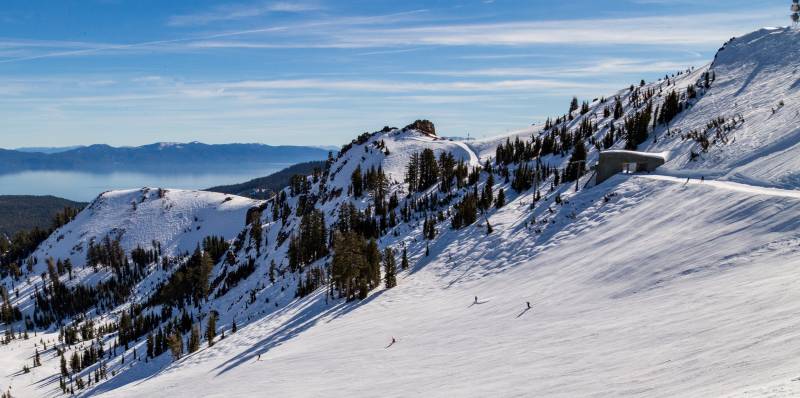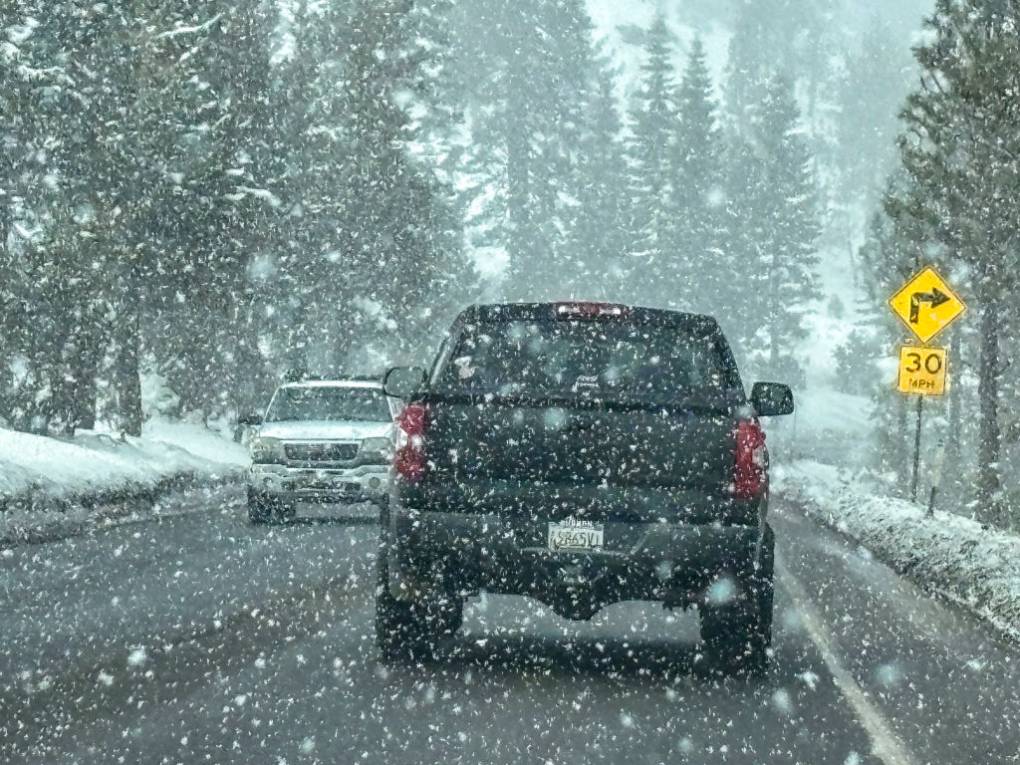How do avalanches happen?
There are different kinds of avalanches that come with different kinds of warning signs and frequency. The two main kinds are dry-loose or sluff avalanches — which are made up of soft snow that collects as it moves — and slab avalanches, which occur when a cohesive layer of snow breaks and moves as a slab downhill. The Palisades avalanches this week were believed to be slab avalanches.
The science of how snow layers form and break is complicated, but in essence, avalanches occur when there’s a surface bed of snow at the bottom, with a weaker layer of snow on top — and then new snow on top of that weaker layer. This creates conditions where the weaker layer can collapse, and the mass of snow on top can fracture and slide. While this can happen naturally, human activity almost always triggers avalanches, causing the weaker layer to collapse.
Things that can affect the likelihood of an avalanche occurring are, according to the National Snow and Ice Data Center (PDF): The instability of the snowpack, the recent weather and snowfall, and the terrain. Avalanches are most likely immediately after a large storm when there has been significant snowfall. Heavy wind that quickly blows in large amounts of snow on top of an existing layer can also cause dangerous conditions. Slight melting and refreezing each night can stabilize the snowpack — but extended periods of out-of-the-ordinary weather changes can cause instability. Even whether or not a slope faces the sun, and the steepness of that slope, can affect the probability of an avalanche.
Within resorts, ski patrols monitor these conditions and conduct avalanche controls — deliberately setting off small avalanches to keep the potential for larger ones from building up. In the backcountry, it’s important to be aware of all these changing variables since you won’t have ski patrols around to do it for you.
What is avalanche equipment?
In the backcountry, avalanche equipment includes:
- An avalanche beacon and receiver
- A probe to stick in the ground to locate someone trapped
- A shovel to dig someone out.
Many jackets and ski pants also now come with a RECCO reflector built in. This small transmitter looks like a label or tag on your coat, pants, helmet or backpack, which transmits to receivers operated by patrols or rescue crews. This is not considered a replacement for an avalanche beacon, but it can augment rescue efforts and is an easy add-on to have inbounds at a resort.
What should I do if I get caught in an avalanche?
First and foremost, try to get off the slab or out of the oncoming avalanche track. This is, of course, not always easy to accomplish since avalanches can travel between 60 mph and 80 mph.
The Sierra Avalanche Center recommends two techniques for escaping the path of an avalanche:
- If you’re skiing or snowboarding, try to head straight downhill to build up some speed, and then angle off to the side to get off the slab.
- If you’re snowmobiling, use the momentum and power to your advantage and continue in the direction you’re going to try to get out of dangerous snow.
The reason people die in avalanches is because the carbon dioxide in the area around their mouth, where they are buried, builds up. If they’re rescued within the first 15 minutes, there is a nearly 93% survival rate, according to stats published by the American Avalanche Association — but it drops drastically with every additional minute. This is why it’s crucial to take steps to increase the likelihood that you can be found and rescued quickly.
- If you get caught in an avalanche and can’t escape, you can try to grab onto a tree. But you’ll have to do this very quickly because avalanches pick up speed within seconds — and getting carried at speed into a tree or boulder is a common source of fatal trauma in an avalanche.
- If you can’t escape or grab onto a tree, then you need to “swim.” Because people are likely to sink in the avalanche debris, it’s important to swim hard to try and keep yourself near the surface.
- Clear a space for air in front of your mouth as the avalanche slows down just before it comes to rest. This will give you slightly longer before the carbon dioxide builds up.
- Push a hand up (or your best guess of what “up” is) because any clues will help people find you faster.
- Remember: All of these things must be done while the debris and snow are still moving — because once the snow stops, it will instantly be too thick and heavy for you to move.
If you see someone caught in an avalanche, do not try to ski or snowmobile over to them while it is occurring — no matter how strong your instinct is to reach them to help out. Instead, you are likely to get caught in the avalanche yourself. You should try to note their starting position and where they end up, and then immediately start searching for them after the avalanche stops.
This story contains reporting by KQED’s Carly Severn. An earlier version of this story was originally published on Jan. 13, 2024.

